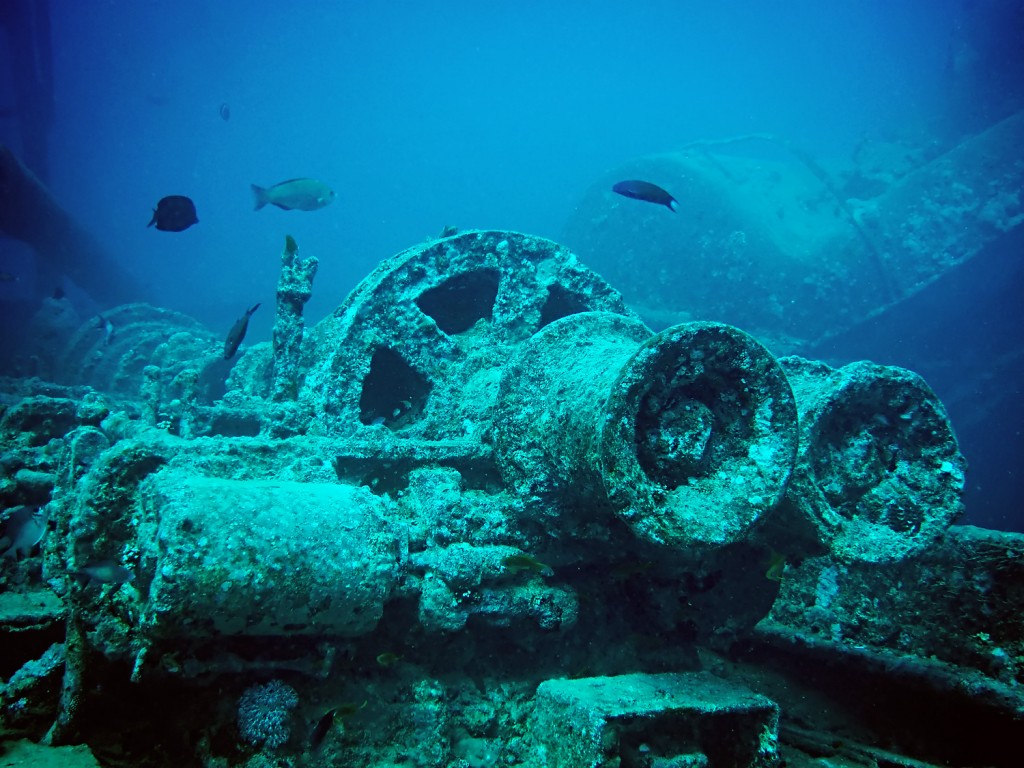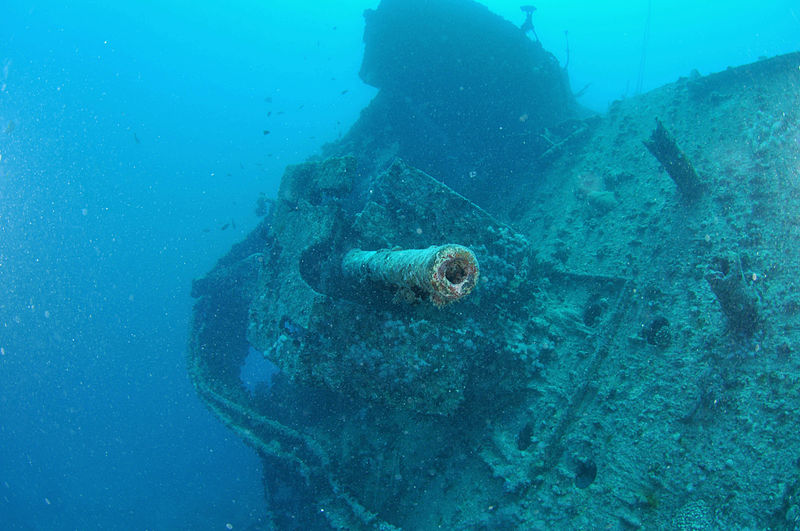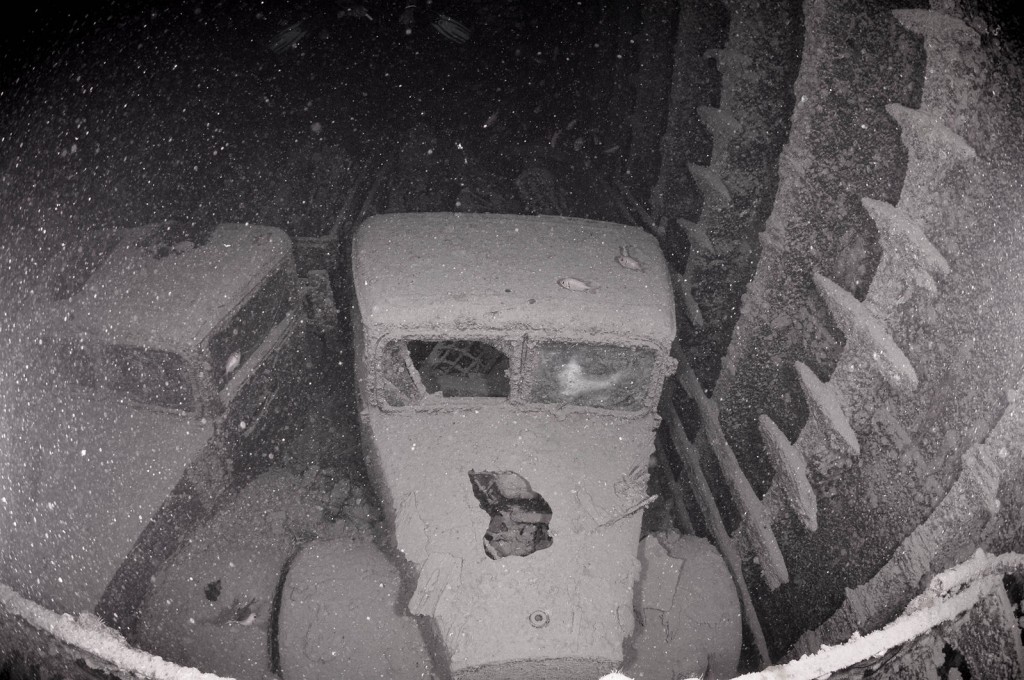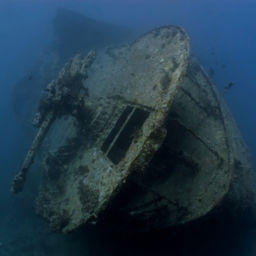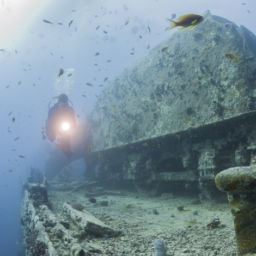Captain William Ellis paced along the bridge, where the windows overlooked the decks below. He was impatient. They had been moored almost two weeks, waiting for the go-ahead to continue north. And they were already plenty late. Not that they had experienced any delays, but circumstances had caused the trip to drag on. And now further circumstances made it even longer. It was already early October, and their cargo was badly needed.
The SS Thistlegorm, was a fairly new ship, and was under Ellis’ command. It had left the shipyards in Sunderland, England, only a year before, in 1940, having been built by Joseph Thompson & Sons for the Albyn line. This was only the ship’s fourth voyage, the three previous having to gone America, Argentina and the West Indies.
Thistlegorm was carrying supplies for the British troops in the North African Theater of World War II — weapons, vehicles, ammunition and uniforms — all desperately needed in the desert war. But the Nazis has almost complete control over the Mediterranean, so while the ship’s final destination was Alexandria, on Egypt’s northern coast, it hadn’t gone by way of the Strait of Gibraltar as it normally would have. Instead, it had skirted the European mainland and hugged Africa’s west coast all the way down to Cape Horn, where it had refueled and joined a convoy before heading back north for the Red Sea. The plan was to go through the Suez Canal to Alexandria — quite a detour, bur far preferable to fighting the Germans at Malta.
But a collision between two vessels in the Suez Canal meant that no ships were able to pass, and the Thistlegorm was ordered to moor up at one of the safe anchorages off the southern tip of the Sinai Peninsula. Safe anchorages were thusly called due to their positions outside the operational range of the German bomber planes coming out of Greece, the location of the nearest Nazi Luftwaffe bases. Operational range was defined as “the distance a plane could cover from sunup to sundown,” as planes were not able to fly at night. And since the Nazis did not have a submarine presence in the Red Sea, any ships moored on these safe anchorages were presumed to be just that.
Ellis drank the last of his tea and headed for his cabin late in the evening of Oct. 5, 1941 hopeful that he might get an early order to ship out. Around 0100 hours on Oct. 6th, the, few crewmen on deck heard a low humming sound coming from far away. Some thought it was a motor on land, others that it came from the HMS Carlisle, the destroyer that had accompanied the Thistlegorm since Cape Town and was moored next to it. In any case, no one took any notice of it.
Two shadows circled the sky. Having left Crete earlier in the day, the planes had only a short time to spend this far south before they had to turn around, if they didn’t want to run out of fuel. The German Heinkel He-111 bombers had recently been outfitted with extra-capacity fuel tanks, extending their range, and the pilots had spent months training in nighttime maneuvers. The Nazi intelligence agency, the Abwehr, had picked up rumors that there was a large troop carrier coming in to the African theater and had deemed it worth the risk to send two bombers to investigate.
Close to the point of no return, the pilots had yet to find their target. Just as they were turning around, one of them spotted something in the distance. He circled back and confirmed: Two ships were moored at an anchorage. Neither was a troop transport, but both were enemy ships. The pilot banked hard and headed for the larger of the two.
There was no warning for the crew on board the Thistlegorm, The first sign that something was wrong was the roar of the Heinkels’ powerful BMW engines and the whistling of not one, but two, bombs dropped from above. Seamen rolled out of their bunks and rushed to their stations, but it was too late. Both bombs hit in midships, which held the ammunition for the soldiers in Alexandria. The explosion was massive, and it lit up the sky for miles around.
The Thistlegorm sank quickly and almost vertically, held in place by the anchor chain. It landed perfectly upright, resting straight on the keel. Nine crewmen were lost. As the streamlined Heinkel bombers turned back for Crete, the glare from the burning wreck lit up another ship, anchored a little way off. The pilots made a note of the location, marking the fate of the Rosalie Moller as well.
In the 1950s, famous underwater explorer Jacques-Yves Cousteau found the wreck of the SS Thistlegorm. Its location was subsequently lost, until it was rediscovered in the 1990s as diving became popular in Sharm el-Sheik. It is now one of the most visited wrecks in the Red Sea.


